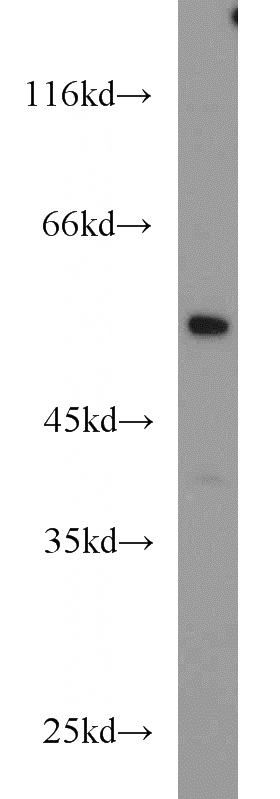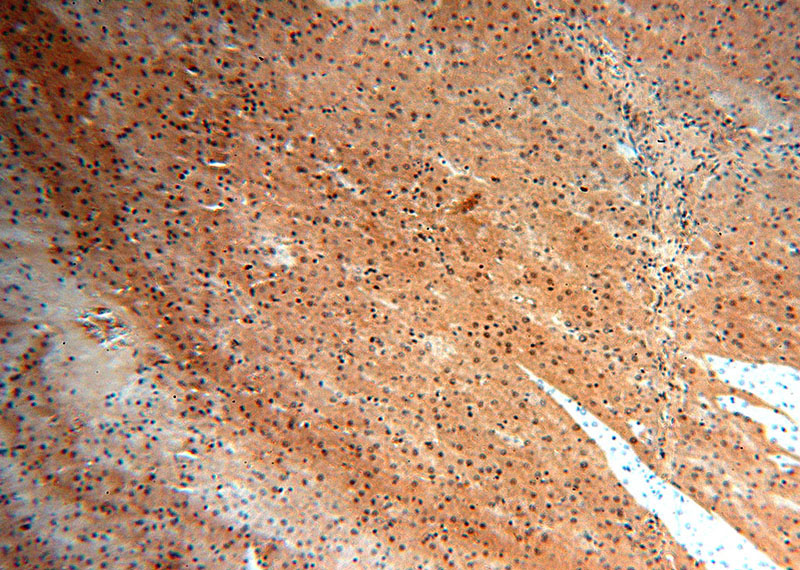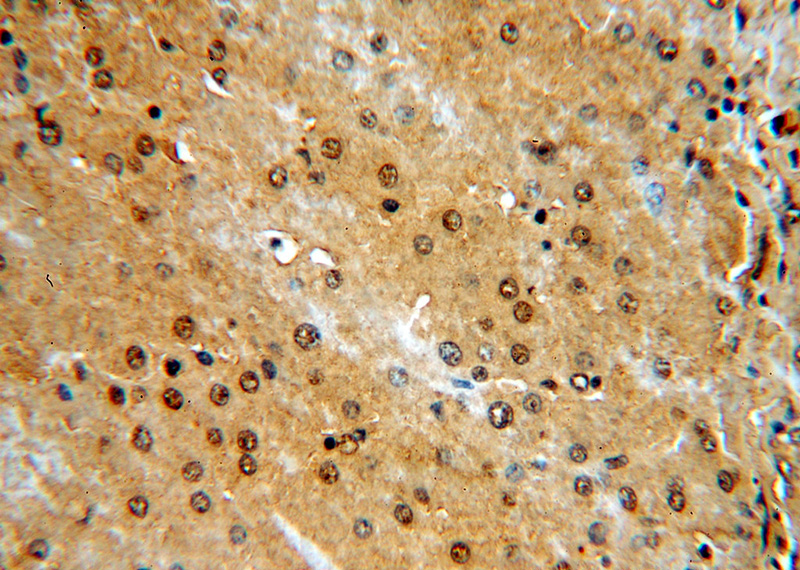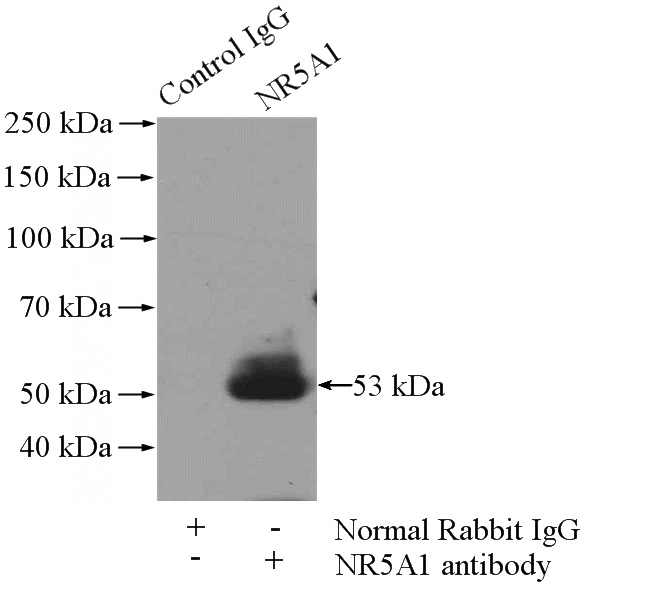-
Product Name
NR5A1 antibody
- Documents
-
Description
NR5A1 Rabbit Polyclonal antibody. Positive IHC detected in human liver tissue, human ovary tissue. Positive WB detected in mouse ovary tissue. Positive IP detected in A2780 cells. Observed molecular weight by Western-blot: 53 kDa
-
Tested applications
ELISA, WB, IHC, IP
-
Species reactivity
Human,Mouse,Rat; other species not tested.
-
Alternative names
AD4BP antibody; Adrenal 4 binding protein antibody; ELP antibody; FTZ1 antibody; FTZF1 antibody; Fushi tarazu factor homolog 1 antibody; NR5A1 antibody; SF 1 antibody; SF1 antibody; SF-1 antibody; Steroid hormone receptor Ad4BP antibody; Steroidogenic factor 1 antibody; STF 1 antibody
-
Isotype
Rabbit IgG
-
Preparation
This antibody was obtained by immunization of NR5A1 recombinant protein (Accession Number: NM_004959). Purification method: Antigen affinity purified.
-
Clonality
Polyclonal
-
Formulation
PBS with 0.02% sodium azide and 50% glycerol pH 7.3.
-
Storage instructions
Store at -20℃. DO NOT ALIQUOT
-
Applications
Recommended Dilution:
WB: 1:500-1:5000
IP: 1:200-1:1000
IHC: 1:20-1:200
-
Validations

mouse ovary tissue were subjected to SDS PAGE followed by western blot with Catalog No:113269(NR5A1 antibody) at dilution of 1:1000

Immunohistochemical of paraffin-embedded human liver using Catalog No:113269(NR5A1 antibody) at dilution of 1:100 (under 10x lens)

Immunohistochemical of paraffin-embedded human liver using Catalog No:113269(NR5A1 antibody) at dilution of 1:100 (under 40x lens)

IP Result of anti-NR5A1 (IP:Catalog No:113269, 4ug; Detection:Catalog No:113269 1:300) with A2780 cells lysate 960ug.
-
Background
Steroidogenic factor-1 (SF-1,STF-1), also known as NR5A1, regulates multiple genes involved in the adrenal and gonadal development and in the biosynthesis of a variety of hormones, including adrenal and gonadal steroids, anti-Mullerian hormone (AMH), and gonadotropins. SF-1 belongs to the fushi tarazu factor-1 (FTZ-F1) subfamily of orphan nuclear receptors. Initially identified as a tissue-specific transcriptional regulator of cytochrome P450 steroid hydroxylases, research studies of both global and tissue-specific knockout mice have demonstrated that SF-1 is required for the development of adrenal glands, gonads, ventromedial hypothalamus, and for the proper functioning of pituitary gonadotropes. Indeed, humans with mutations that render SF-1 transcriptionally inactive can present with testicular failure, ovarian failure, and adrenal insufficiency. Furthermore, dysregulation of SF-1 has been linked to diseases such as endometriosis and adrenocortical carcinoma.Like other nuclear hormone receptors, SF-1 has a modular domain structure composed of an N-terminal zinc finger DNA-binding domain, a ligand-binding domain, a C-terminal AF-2 activation domain, and a hinge region with AF-1-like activation activity. SF-1 also contains a fushi tarazu factor 1 box, which functions as an accessory DNA binding domain. SF-1 is primarily phosphorylated at Ser203, which is thought to enhance its transcriptional activity by promoting complex formation with transcriptional cofactors. In addition to phosphorylation at Ser203, SF-1 is subject to SUMO conjugation and acetylation at ε-amino groups of target lysine residues. Whereas SUMOylation represses SF-1 function, acetylation enhances its transcriptional activity.In the adult ovary, SF-1 localizes to theca/interstitial cells.
Related Products / Services
Please note: All products are "FOR RESEARCH USE ONLY AND ARE NOT INTENDED FOR DIAGNOSTIC OR THERAPEUTIC USE"
